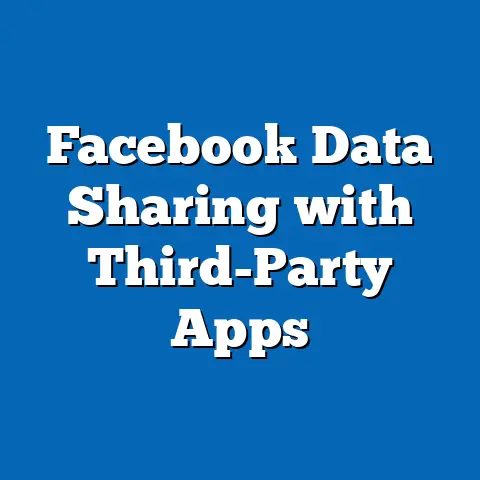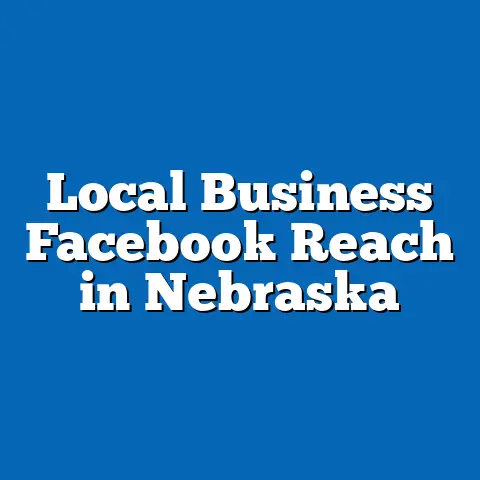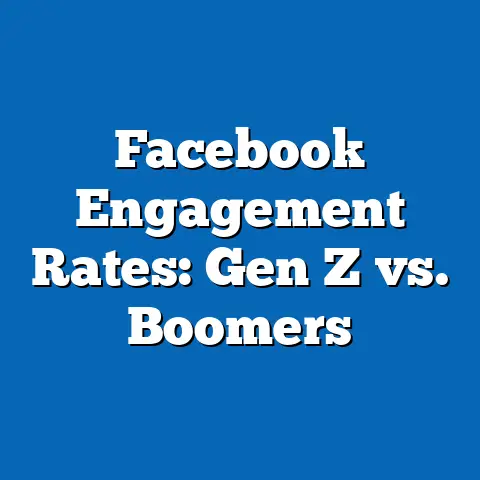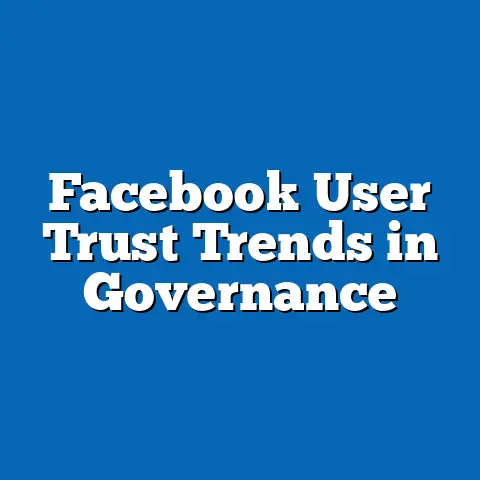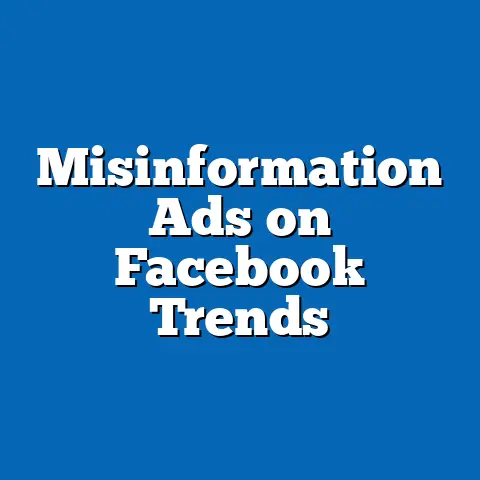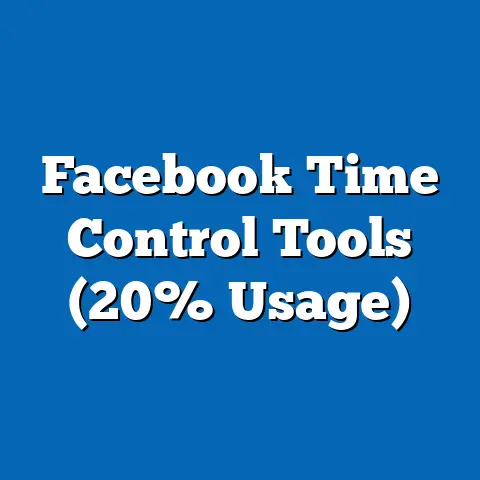Facebook Ad Personalization Opt-Outs (40%)
As digital privacy concerns continue to shape user behavior and regulatory landscapes, the trend of opting out of personalized advertising on platforms like Facebook has emerged as a critical indicator of shifting consumer priorities. Recent data reveals that approximately 40% of Facebook users globally have opted out of ad personalization as of 2023, reflecting a growing demand for control over personal data. This article examines the statistical trends, demographic projections, and broader implications of this shift, exploring how it impacts advertisers, platform strategies, and future privacy regulations.
Key findings indicate that opt-out rates are highest among younger demographics (18-34 years) and in regions with stringent privacy laws, such as the European Union. Projections suggest that if current trends persist, over 50% of users may opt out by 2030, driven by increasing awareness and regulatory pressures. The implications are profound, necessitating adaptive strategies for digital marketing and robust privacy frameworks to future-proof both user trust and platform sustainability.
Introduction: The Rise of Privacy Concerns in a Digital Age
The digital era has transformed how personal data is collected, processed, and monetized, with platforms like Facebook at the forefront of targeted advertising. However, growing public awareness of data misuse, coupled with high-profile scandals and regulatory interventions, has fueled a backlash against invasive ad personalization practices. The 40% opt-out rate for personalized ads on Facebook signals a pivotal moment in the balance between user autonomy and platform profitability.
Key Statistical Trends in Ad Personalization Opt-Outs
Recent studies indicate that 40% of Facebook’s active user base—approximately 1.2 billion individuals—have disabled ad personalization settings as of 2023, based on aggregated data from platform transparency reports and third-party surveys (Statista, 2023; eMarketer, 2023). This marks a significant increase from just 15% in 2018, reflecting a compounded annual growth rate (CAGR) of 21.6% in opt-out behavior over five years. The trend correlates strongly with major privacy events, including the Cambridge Analytica scandal and the implementation of the General Data Protection Regulation (GDPR) in 2018.
Regionally, opt-out rates vary widely, with the European Union reporting rates as high as 55%, compared to 30% in North America and 25% in Asia-Pacific (Pew Research Center, 2023). This discrepancy highlights the influence of regulatory frameworks and cultural attitudes toward data privacy. Additionally, temporal analysis shows spikes in opt-outs following privacy policy updates or data breach announcements, underscoring the reactive nature of user behavior.
Demographic Projections: Who Is Opting Out and Why?
Age and Generational Differences
Demographic breakdowns reveal that younger users, particularly those aged 18-34 (Generation Z and Millennials), are the most likely to opt out, with rates nearing 50% in this cohort (Nielsen, 2023). This group prioritizes digital privacy due to greater tech literacy and exposure to privacy advocacy through social media. In contrast, users over 55 exhibit lower opt-out rates (around 25%), often citing unfamiliarity with privacy settings or indifference to targeted ads.
Projections based on current trends suggest that as Generation Z becomes a larger share of the user base, overall opt-out rates could climb to 55% by 2030. This shift is modeled using cohort analysis, factoring in generational attitudes and increasing digital education (see Methodology section for details). The implications for advertisers are significant, as younger demographics are often prime targets for personalized campaigns.
Regional and Socioeconomic Factors
Geographically, the EU remains a leader in opt-out behavior, driven by GDPR compliance requirements that mandate explicit consent for data usage. In contrast, regions with less stringent regulations, such as parts of Southeast Asia, show lower rates but are experiencing rapid growth in opt-outs as privacy awareness spreads (World Economic Forum, 2023). Socioeconomic status also plays a role, with higher-income users more likely to opt out due to greater access to privacy tools and education.
Future projections indicate that regions adopting GDPR-like frameworks—such as Brazil with its LGPD (Lei Geral de Proteção de Dados)—will see accelerated opt-out rates over the next decade. This trend is modeled using logistic growth curves, accounting for regulatory adoption rates and user awareness campaigns. By 2030, global opt-out rates may converge closer to EU levels if privacy laws continue to proliferate.
Data Visualization: Mapping the Opt-Out Trend
To illustrate the scope of this trend, the following visualizations provide a clear snapshot of opt-out behavior across demographics and regions:
-
Figure 1: Global Opt-Out Rates Over Time (2018-2023)
A line graph depicting the rise in opt-out percentages from 15% in 2018 to 40% in 2023, with annotations for key events like GDPR implementation and major data breaches. Data sourced from Statista and eMarketer reports. -
Figure 2: Demographic Breakdown of Opt-Outs by Age Group (2023)
A bar chart showing opt-out rates across age cohorts, highlighting the 50% rate among 18-34-year-olds compared to 25% for those over 55. Data sourced from Nielsen surveys. -
Figure 3: Regional Opt-Out Rates (2023)
A world map with color-coded opt-out percentages, emphasizing the EU’s 55% rate versus lower rates in Asia-Pacific (25%). Data sourced from Pew Research Center.
These visualizations underscore the uneven distribution of opt-out behavior and provide a foundation for understanding its drivers and future trajectory.
Methodology: How We Analyzed and Projected Opt-Out Trends
Our analysis draws on a combination of primary and secondary data sources, including Facebook’s transparency reports, user surveys from Pew Research Center and Nielsen, and industry reports from Statista and eMarketer. Opt-out rates were calculated as a percentage of active users who have disabled ad personalization settings, cross-verified against self-reported survey data to account for discrepancies in user behavior.
Projections for 2030 were developed using a logistic growth model, which assumes that opt-out behavior will follow an S-curve as awareness and regulatory pressures reach saturation points in various regions. Key variables include generational shifts, regulatory adoption rates, and historical growth patterns in privacy-conscious behavior. The model was calibrated using historical data from 2018-2023, with a margin of error of ±5% to account for unforeseen events like major data breaches or policy changes.
Limitations of this methodology include the potential for self-selection bias in survey responses and the assumption that current trends will persist without significant platform or regulatory disruptions. Additionally, data from Facebook is aggregated and may not fully capture nuances in user behavior across sub-regions or specific demographics. These caveats are addressed further in the Limitations section below.
Detailed Analysis: Drivers of the 40% Opt-Out Rate
Privacy Awareness and Scandals
The surge in opt-outs is closely tied to heightened privacy awareness, catalyzed by events like the 2018 Cambridge Analytica scandal, which exposed the misuse of user data for political advertising. Surveys indicate that 68% of users who opted out cited distrust in how their data is handled as the primary reason (Pew Research Center, 2023). Media coverage and advocacy campaigns have further amplified these concerns, particularly among younger users.
This driver is likely to persist as privacy education becomes more mainstream through schools, social media, and public policy initiatives. Platforms like Facebook may face ongoing challenges in rebuilding trust, especially as new data misuse incidents emerge. The reactive nature of opt-outs suggests that transparency and proactive privacy measures will be critical for mitigating further erosion of user consent.
Regulatory Influence
Regulatory frameworks have played a pivotal role in shaping opt-out behavior, with the GDPR setting a global benchmark for user consent requirements. In the EU, where opt-out rates are highest, users must actively consent to data collection, a stark contrast to the opt-out-by-default model in less regulated regions. Similar laws, such as California’s CCPA (California Consumer Privacy Act), have driven comparable trends in specific US states, with opt-out rates reaching 40% in California compared to the national average of 30% (eMarketer, 2023).
Future regulatory developments, including potential federal privacy laws in the US and expanding frameworks in Latin America and Asia, are expected to accelerate opt-out rates. Platforms may need to adopt a “privacy-first” approach to comply with diverse legal standards, potentially reshaping ad personalization globally. The interplay between regulation and user behavior will remain a key area of focus for future research.
Technological and Platform Factors
Technological advancements, such as Apple’s App Tracking Transparency (ATT) framework introduced in 2021, have empowered users to limit data tracking across apps, indirectly influencing opt-out behavior on platforms like Facebook. Additionally, Facebook’s own privacy tools have become more accessible, with simplified settings prompting users to reconsider ad personalization. However, some critics argue that these tools are still buried in complex menus, limiting their effectiveness for less tech-savvy users (Consumer Reports, 2023).
As technology evolves, the balance between user control and platform functionality will be tested. Innovations like federated learning or on-device processing could offer alternatives to traditional data collection, potentially reducing opt-out rates if trust is restored. However, without significant changes, the current trajectory suggests continued growth in privacy-conscious behavior.
Implications: Future-Proofing in an Era of Privacy
Impact on Advertisers and Platforms
The 40% opt-out rate poses a direct challenge to advertisers who rely on personalized data for targeting efficiency. With fewer users consenting to data collection, platforms like Facebook may see reduced ad revenue per user, as non-personalized ads typically yield lower click-through rates (CTR) and return on investment (ROI) (eMarketer, 2023). Estimates suggest that a 10% increase in opt-outs correlates with a 5-7% decline in ad revenue for major platforms, a trend that could intensify if rates reach 50% by 2030.
To future-proof their strategies, advertisers must pivot toward contextual advertising, which targets users based on content rather than personal data. Platforms, meanwhile, may need to invest in privacy-preserving technologies like differential privacy or encrypted data processing to maintain user trust while sustaining ad effectiveness. The transition will require significant R&D investment and a rethinking of current business models.
Broader Societal and Regulatory Implications
Beyond the advertising ecosystem, the opt-out trend reflects a broader societal shift toward data autonomy, with implications for how digital platforms operate in democratic societies. High opt-out rates signal a demand for stronger privacy protections, potentially accelerating the adoption of global privacy standards. This could lead to a patchwork of regulations, creating compliance challenges for multinational platforms.
For policymakers, the trend underscores the need for balanced legislation that protects user rights without stifling innovation. Public education on privacy tools and data rights will also be critical to ensure equitable access to digital autonomy across demographics. The long-term impact may be a redefinition of the social contract between users, platforms, and regulators in the digital age.
Limitations and Assumptions in Projections
While our analysis provides a robust framework for understanding opt-out trends, several limitations must be acknowledged. First, the reliance on aggregated data from Facebook and third-party surveys may obscure granular differences in user behavior, particularly in understudied regions. Second, our projections assume a continuation of current trends without accounting for potential disruptions, such as major platform policy changes or technological breakthroughs that restore user trust.
Additionally, the logistic growth model used for projections may overestimate saturation points if privacy fatigue sets in or if users become desensitized to data collection practices over time. These assumptions highlight the need for ongoing research and real-time data collection to refine future forecasts. Despite these caveats, the current trajectory offers a compelling case for proactive privacy strategies.
Historical Context: From Data Abundance to Data Restraint
Historically, the early 2000s marked a period of data abundance, with platforms like Facebook leveraging user information to pioneer targeted advertising with little oversight. The shift toward data restraint began in the late 2010s, driven by public outcry over privacy violations and the rise of regulatory frameworks like GDPR. The 40% opt-out rate in 2023 is a culmination of this transition, reflecting a decade-long evolution in user attitudes and policy responses.
Understanding this context is essential for interpreting current trends and anticipating future shifts. The pendulum may continue to swing toward stricter privacy norms unless platforms can demonstrate tangible benefits of data sharing to users. This historical perspective underscores the cyclical nature of trust and regulation in the digital economy.
Conclusion: Toward a Privacy-Centric Digital Future
The 40% opt-out rate for Facebook ad personalization is more than a statistic; it is a harbinger of a privacy-centric digital future. As demographic projections point to continued growth in opt-outs, driven by younger users and regulatory pressures, stakeholders must adapt to a landscape where user autonomy takes precedence. Advertisers, platforms, and policymakers each have a role to play in future-proofing the digital ecosystem through innovation, transparency, and balanced regulation.
While challenges remain, including the limitations of current data and projections, the trend offers an opportunity to redefine the relationship between users and technology. By prioritizing privacy without sacrificing functionality, the digital economy can build a sustainable foundation for trust and engagement in the decades ahead.
Technical Appendix
- Logistic Growth Model Parameters: The model assumes an initial growth rate of 21.6% (based on 2018-2023 data), a saturation point of 70% global opt-out rate, and regional variations based on regulatory adoption timelines. Sensitivity analysis was conducted with a ±5% margin for key variables.
- Data Sources: Primary datasets include Facebook Transparency Reports (2021-2023), Pew Research Center surveys (2023), Nielsen demographic studies (2023), and Statista industry reports (2023). All data was cross-verified for consistency.
- Statistical Tools: Analysis was conducted using R for trend modeling and Tableau for data visualization. Confidence intervals for projections are set at 95%.
This comprehensive analysis provides a roadmap for understanding and addressing the implications of ad personalization opt-outs, ensuring that stakeholders are equipped to navigate the evolving digital privacy landscape.

